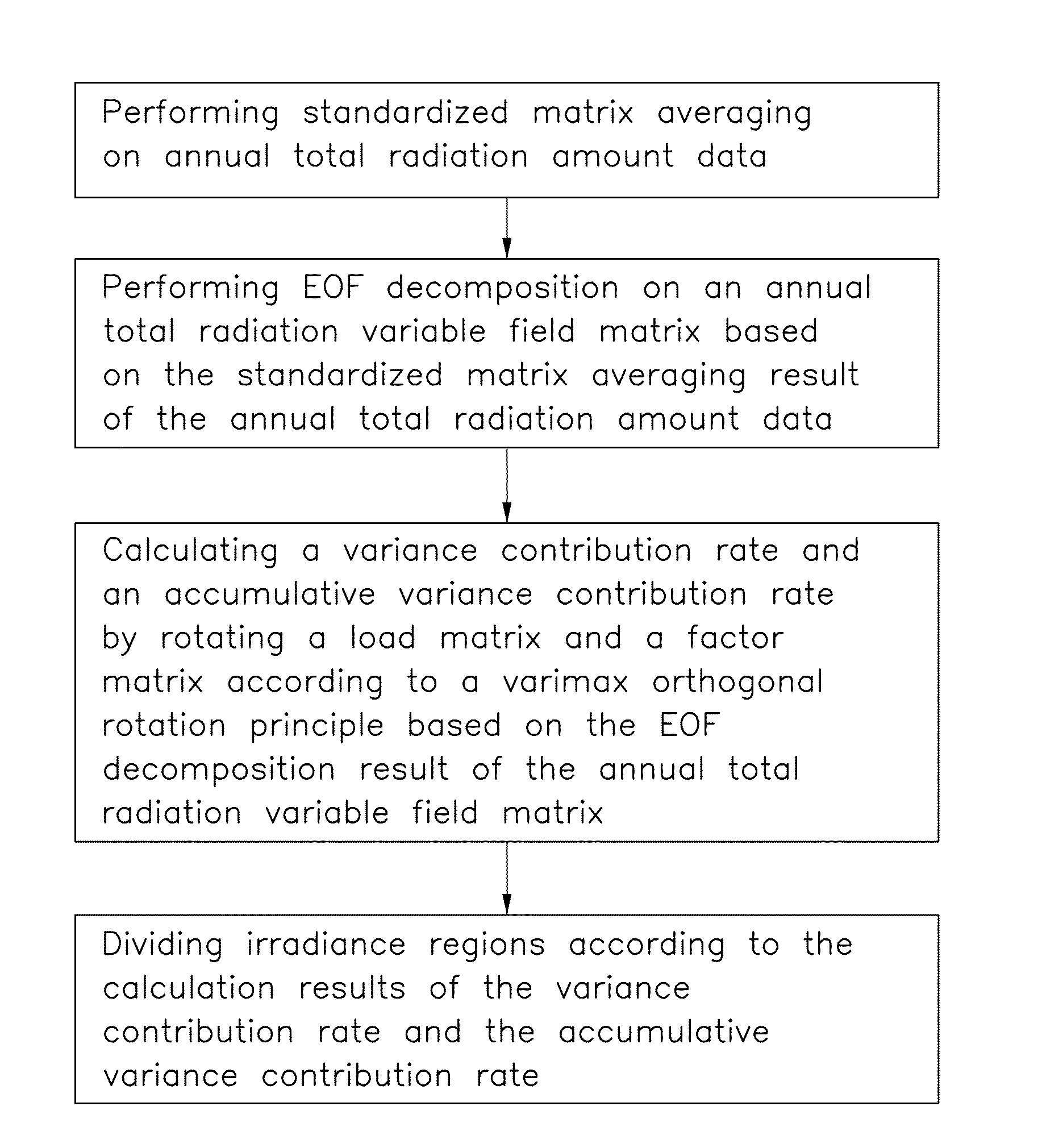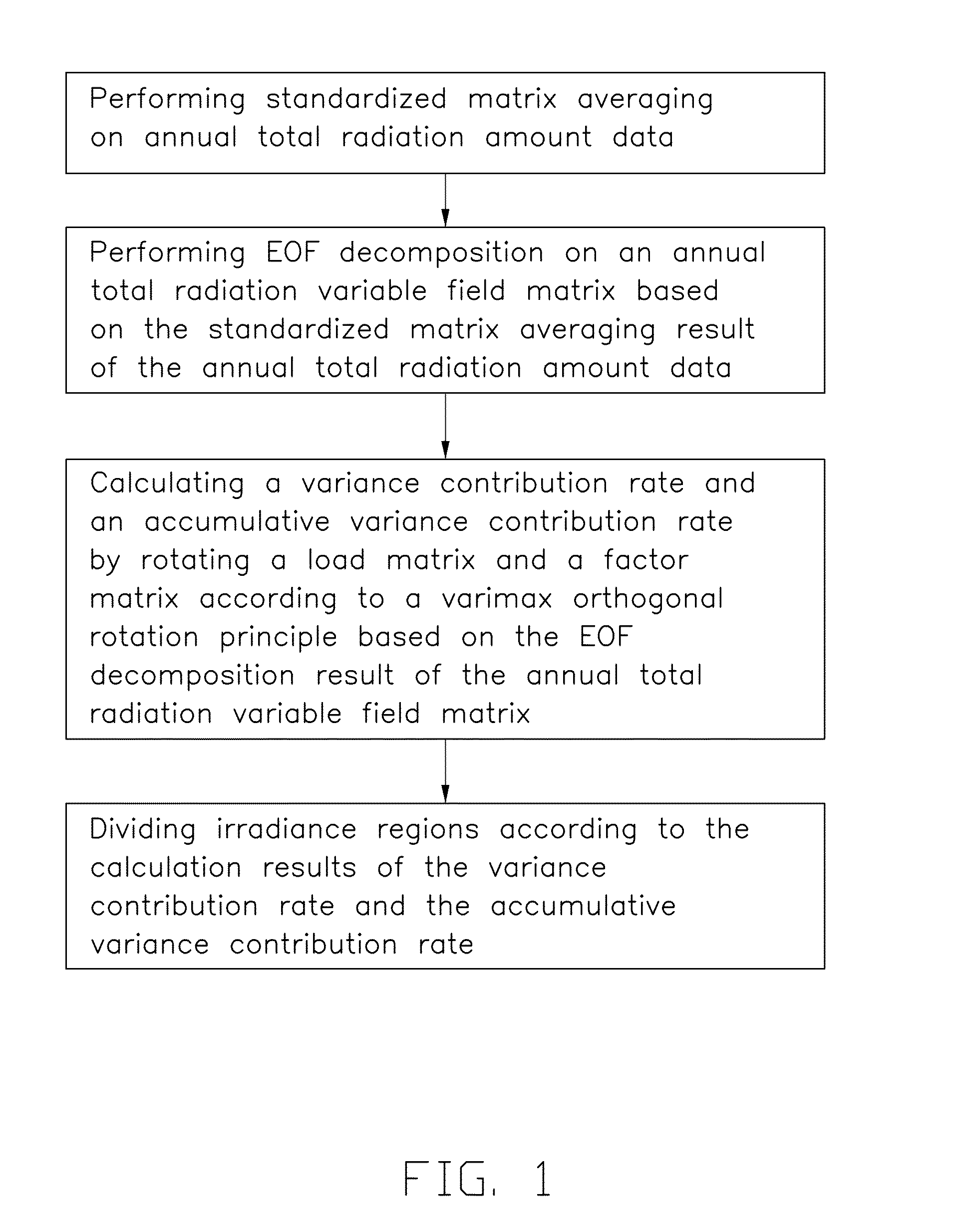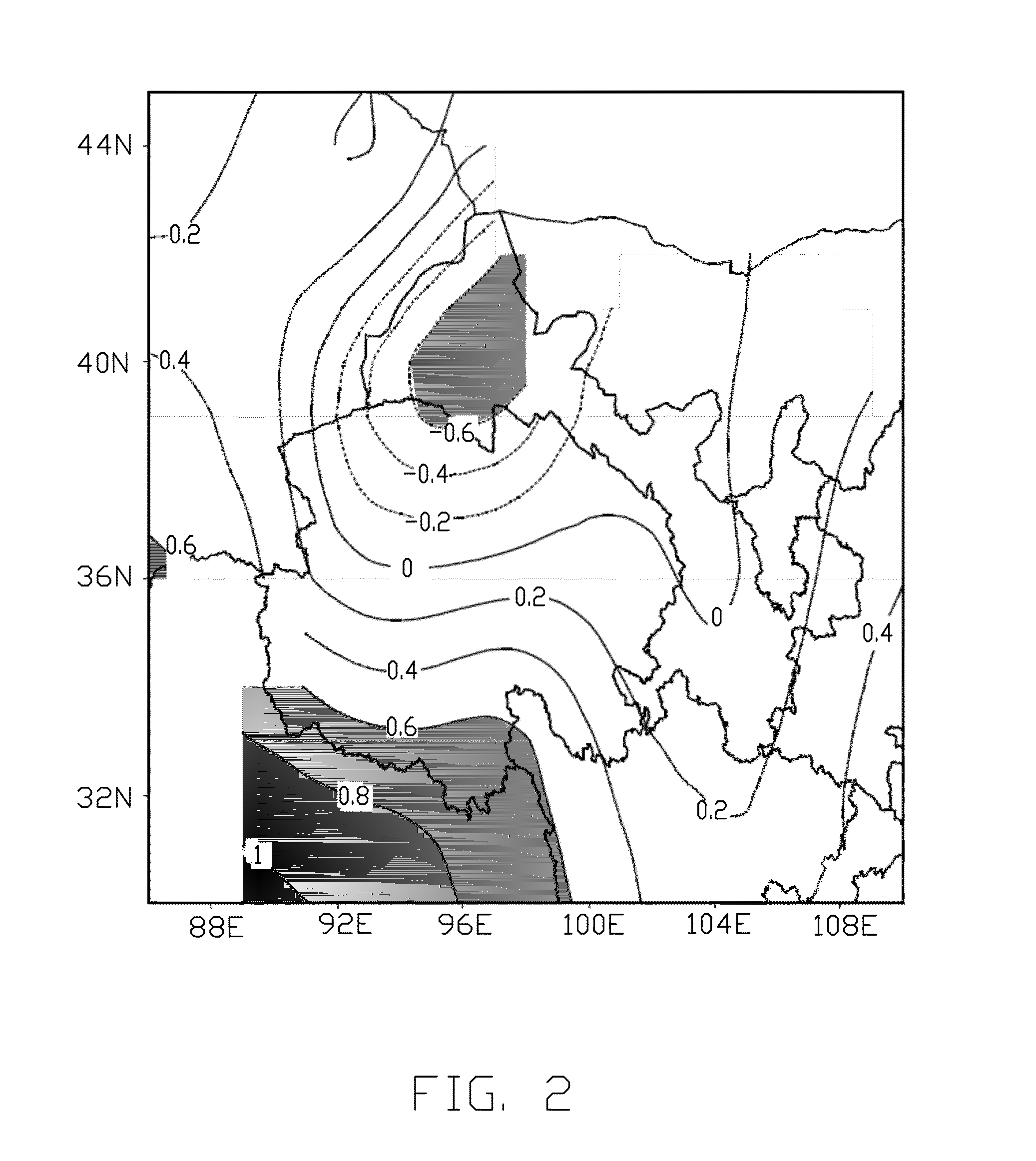Method of dividing irradiance regions based on rotated empirical orthogonal function
a technology of empirical orthogonal function and dividing irradiance regions, which is applied in the field of rotating empirical orthogonal function to divide irradiance regions, can solve the problems of poor environmental protection, low energy conversion efficiency, poor stability of the method of dividing irradiance regions
- Summary
- Abstract
- Description
- Claims
- Application Information
AI Technical Summary
Benefits of technology
Problems solved by technology
Method used
Image
Examples
Embodiment Construction
[0013]The disclosure is illustrated by way of example and not by way of limitation in the figures of the accompanying drawings in which like references indicate similar elements. It should be noted that references to “an” or “one” embodiment in this disclosure are not necessarily to the same embodiment, and such references mean at least one.
[0014]A method of dividing irradiance regions based on rotated empirical orthogonal function comprises:
[0015]step (a), performing standardized matrix averaging on annual total radiation amount data;
[0016]step (b), performing EOF decomposition on an annual total radiation variable field matrix based on the standardized matrix averaging result of the annual total radiation amount data;
[0017]step (c), calculating a variance contribution rate and an accumulative variance contribution rate by rotating a load matrix and a factor matrix according to a varimax orthogonal rotation principle based on the EOF decomposition result of the annual total radiati...
PUM
 Login to View More
Login to View More Abstract
Description
Claims
Application Information
 Login to View More
Login to View More - R&D
- Intellectual Property
- Life Sciences
- Materials
- Tech Scout
- Unparalleled Data Quality
- Higher Quality Content
- 60% Fewer Hallucinations
Browse by: Latest US Patents, China's latest patents, Technical Efficacy Thesaurus, Application Domain, Technology Topic, Popular Technical Reports.
© 2025 PatSnap. All rights reserved.Legal|Privacy policy|Modern Slavery Act Transparency Statement|Sitemap|About US| Contact US: help@patsnap.com



